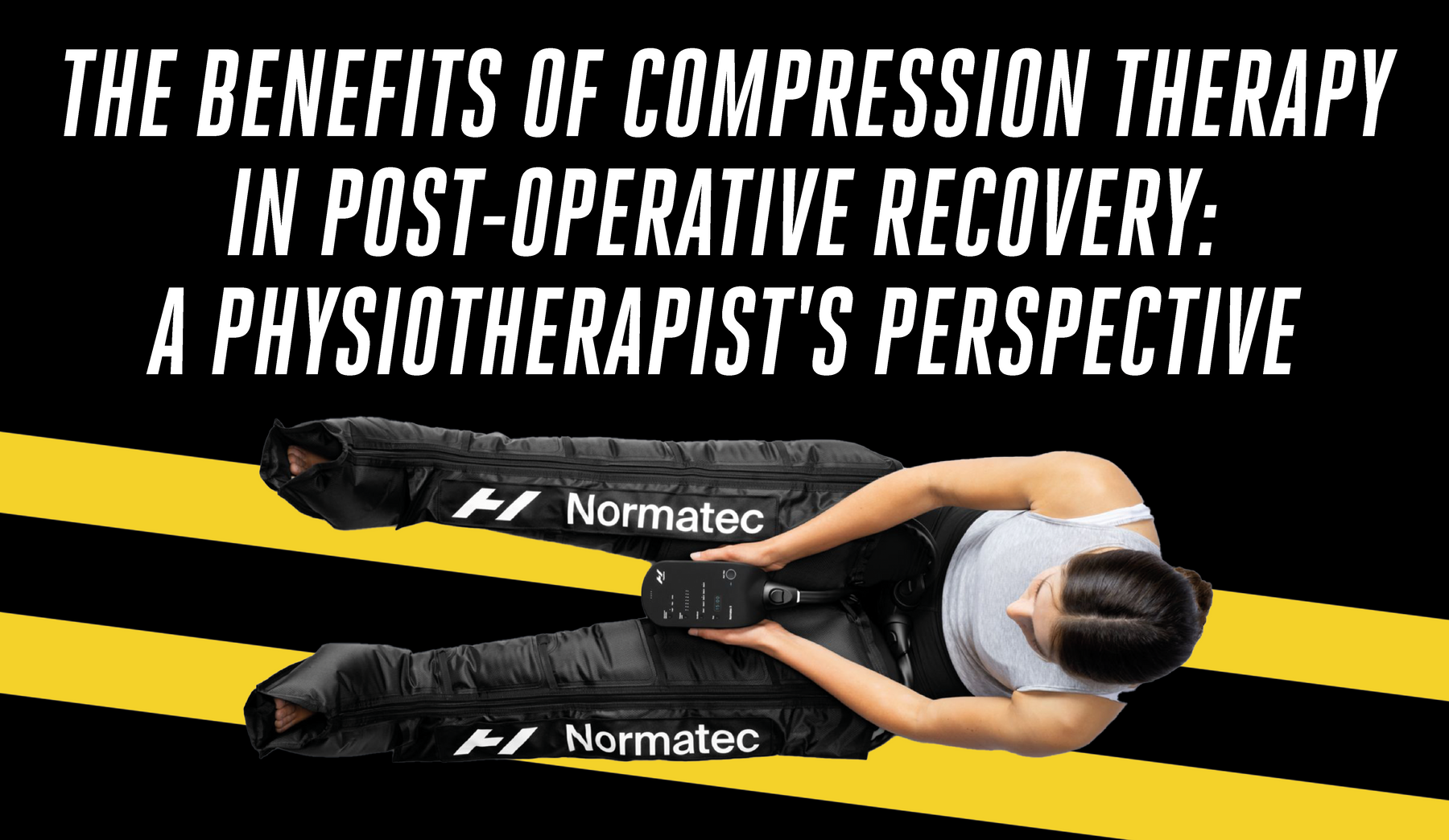Speak to a Recovery Expert today

The Benefits of Compression Therapy in Post-Operative Recovery: A Physiotherapist's Perspective
Introduction:
Post-operative recovery can be a challenging process, often requiring a combination of medical and therapeutic interventions. As physiotherapists, we play a crucial role in supporting our patients through this process, helping them to regain function and mobility and trying to reduce pain and discomfort. One tool that can be particularly effective in aiding post-operative recovery is compression therapy. Here, we'll explore the potential benefits and how we think it works to support the recovery process.
Benefits of Compression Therapy:
Compression therapy has been used for many years to manage post-operative recovery. It involves applying pressure to the affected area using a few different modalities, elastic bandage, compression stocking, or pneumatic compression device. The benefits of compression therapy include reducing swelling, improving circulation, and providing support to the healing process.
One of the primary benefits of compression therapy is the reduction of swelling. Swelling is a common occurrence after surgery and can result in discomfort, stiffness, and decreased range of motion, applying compression can help to reduce the amount of fluid buildup in the affected area, thereby reducing swelling and promoting recovery.
Compression therapy also improves circulation, which can aid in the delivery of oxygen and nutrients to the healing tissues, encouraging the mobilisation of inflammation to allow removal of waste products.
Nerd Alert:
A systematic review and meta-analysis published in the Journal of Orthopaedic Surgery and Research found that compression therapy significantly reduced post-operative swelling and pain in patients undergoing knee arthroscopy (1). Another study published in the Journal of Sports Science and Medicine found that compression stockings improved recovery after exercise-induced muscle damage (2).
Pneumatic compression devices are another type of compression therapy that have been studied for their benefits in post-operative recovery. A randomised controlled trial investigating the use of pneumatic compression with ankle joint movement in patients undergoing total knee arthroplasty found that it significantly reduced lower extremity edema and improved range of motion and postural balance (3). The use of intermittent pneumatic compression in patients undergoing total ankle arthroplasty found that it significantly reduced postoperative edema (4). Additionally, a prospective randomised controlled trial investigating the use of intermittent pneumatic compression in reducing the risk of deep vein thrombosis in patients undergoing total hip arthroplasty found that it significantly reduced the incidence of deep vein thrombosis compared to the control group (5).
Conclusion:
Compression therapy can be an effective adjunct for physiotherapists to aid in the post-operative recovery of their patients. It can help to reduce swelling, improve circulation, and help to encourage the removal of waste products, especially while patients are more sedentary in the early phases.. The use of compression therapy is supported by research studies, including those investigating the benefits of pneumatic compression devices. It is important to ensure that compression is applied correctly and at the appropriate level of pressure to achieve the desired benefits. As physiotherapists, we can play a crucial role in helping our patients understand the benefits of compression therapy and how it can support their post-operative recovery.
References:
1). Wang J, Li J, Peng Y, et al. The effectiveness of compression therapy on postoperative swelling and pain following knee arthroscopy: a systematic review and meta-analysis. J Orthop Surg Res. 2019;14(1):33. doi:10.1186/s13018-019-1062-8
2). Hill J, Howatson G, van Someren K, Leeder J, Pedlar C. Compression garments and recovery from exercise-induced muscle damage: a meta-analysis. J Sports Sci Med. 2019;18(2):282-293. PMID: 31191019; PMCID: PMC6530184.
3). Wu YH, Lin CF, Chen WC, Lin YS, Chen JY. Effects of pneumatic compression with ankle joint movement on lower extremity edema, range of motion, and postural balance after total knee arthroplasty. BMC Musculoskelet Disord. 2020;21(1):525. doi:10.1186/s12891-020-03548-5
4). Kim YK, Kim JS, Lee HS, et al. The Effect of Intermittent Pneumatic Compression on Postoperative Edema After Total Ankle Arthroplasty. Foot Ankle Int. 2020;41(2):184-189. doi:10.1177/1071100719885384
5). Kim YT, Yoon JR, Kim HJ, Ha YC, Koo KH. Intermittent Pneumatic Compression with the Same Pump Setting Reduces the Risk of Deep Vein Thrombosis after Total Hip Arthroplasty. J Korean Med Sci. 2018;33(47):e298. doi:10.3346/jkms.2018.33.e298

